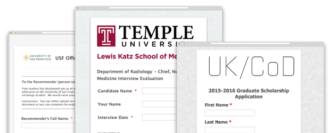Steps to planning a school field trip
- Commit to early planning
- Decide on your destination
- Get buy-in from administrators
- Contact the site
- Arrange transportation
- Plan food options
- Recruit chaperones
- Prepare students for the trip
- Get permissions from parents
Students love field trips — especially since they break up the normal school routine — but they’re often stressful for the educators who have to plan them. Pulling off a successful school field trip requires an enormous amount of preparation and organization, but it all translates into a rewarding educational experience for participants that has a long-lasting, positive impact.
According to a study cited by the National Education Association, students who took part in school field trips had better grades and graduation rates from both high school and college. They also eventually earned a higher income than their counterparts who hadn’t participated in such trips as students.
The hands-on, experiential learning students get from school field trips delivers a lot of other benefits — like increased knowledge retention, a more developed sense of independence, access to other cultures that broaden students’ horizons, and the chance to bond with other students and create life-long memories.
And the planning part? It doesn’t have to be daunting if you start early. Plus, we’re making it a little easier by giving you nine tips for organizing a successful school field trip and 23 field trip ideas.
9 steps to planning a successful school field trip
1. Commit to early planning
The earlier you begin planning, the less stressed you’ll be if and when obstacles arise. There are a lot of details to iron out, such as
- Researching and selecting a destination
- Getting feedback from administrators, parents, and students on the destination
- Planning the educational portion of the trip
- Getting parental permissions
- Arranging transportation
- Figuring out a meal plan
- Recruiting chaperones
- And more
Giving yourself a long lead time will help you tackle any unexpected snafus along the way.
2. Decide on your destination
Do some initial research and brainstorm potential school field trip destinations based on your learning objectives and curriculum goals. Consider location, cost of entry and parking, the ages and number of participants, the duration (e.g., a day-long excursion or an overnight trip), and any other key details that factor into the selection of an appropriate field trip destination.
Once you come up with a couple of good options, get feedback from colleagues, administrators, parents, and, if appropriate, the students themselves.
3. Get buy-in from administrators
Once you’ve decided on the ideal location for your field trip, be sure to get clearance from the appropriate administrators before you discuss trip details with students. You don’t want to get their hopes up if the administration rejects your carefully laid out plans!
Share the costs, the benefits of the trip for students, the days and times for the trip, and any other relevant details to help get the administration on board.
4. Contact the site
Once you have a “yes” from the powers that be, get in touch with the site and confirm that your preferred days and times are available. Make reservations if necessary, find out about group rate discounts and cancellation policies, pay any required deposits, and verify the site is accessible to those with disabilities. You can also share the number of children that will be in attendance and the special needs your students have, if any.
If it’s possible, conduct a site visit before the trip to get the lay of the land, locate the restrooms, note where students will be eating lunch, and any other relevant information it would be helpful to know before the field trip.
5. Arrange transportation
Now that you know where you’re going and when, it’s time to plan how you’re going to get there. You’ll likely travel by school bus, but if your group is smaller, you might get there in staff vehicles or even via public transportation. If you’re using school buses, you’ll need to reserve them in advance to be sure they’re available the day of your excursion, and you’ll have to fill out the required forms.
6. Plan food options
Of course, a day-long outing is going to require some serious planning, because no one wants a bunch of hungry kids on their hands!
There are a few options for food. Students can bring their own lunches, which can make things easier for everyone. Or you can make plans to eat at an onsite restaurant or cafeteria if one is available (which you may be able to reserve in advance).
Then there’s the option of eating at a restaurant, which might be the least palatable choice, given that kids might get unruly, you or they will have to handle money, and ordering could take a long time.
7. Recruit chaperones
Depending on the age of your students and the activities you’ve planned, it’s best to have a ratio of at least one adult to every 10 kids. If the students are younger, you may want more adults present.
You’ll need to recruit and confirm chaperones at least two to three weeks in advance, and be sure you have a list of alternates in case a chaperone has to drop out for any reason. Be clear with your chaperones that this is an educational trip and clearly share what you need them to do.
8. Prepare students (and parents) for the trip
Once all of your plans are in place and everyone’s excited, it will be time to share trip details with students and parents, and let them know what’s expected of them.
Hold an informational meeting for parents to discuss trip details, chaperone information, and rules and expectations regarding students.
Share trip rules with students and be clear about appropriate behavior. Let them know what the day’s itinerary looks like, what to bring, what to wear, and what not to bring (for example, anything of value that could get lost or stolen).
9. Get permissions from parents or guardians and automate the process where possible
Gathering permission slips from parents for school field trips is essential. Jotform can help simplify the process. If you want some tips to make this easier, check out our guide on how to collect online permission slips from parents.
We’ve also made it easy to automate your field trip planning with all the forms, tables, and templates you need for a successful school field trip:
- Field trip interest form
- Field trip permission form
- Field trip approval request form
- Field trip signup sheet
- Field trip permission slip template
And last, it probably goes without saying that you should be prepared in case you run into any emergencies. Bring along an emergency or first aid kit, and keep a list of parent contact information on hand.
Now that you have your planning to-dos sorted, how about some field trip ideas?
23 field trip destination ideas
Here are a few destinations that would make ideal learning experiences for students, depending on your curriculum goals and objectives:
- Botanical gardens
- Nature centers, bird sanctuaries, and wildlife refuges
- State and national parks and other natural attractions
- County and city parks
- Farms, orchards, greenhouses, and nurseries
- Community gardens
- Historic sites
- Aquariums
- Planetariums
- Zoos
- Museums
- Art galleries
- Cultural centers
- Radio and television stations
- Newspaper or local publication offices
- Libraries
- Police and/or fire stations
- Animal shelters
- Behind-the-scenes theater tours
- Courtrooms
- State Capitol Building and/or county buildings
- Local businesses
- Colleges and universities
If an onsite field trip isn’t feasible, you can plan a virtual school field trip as an alternative. Many of the organizations above can provide this service via video, guest speakers, demonstrations, or other presentations. Our handy virtual field trip registration form can get you started.
Try Jotform
Because Jotform loves educators, we have special pricing plans just for you. Get started today and receive a 50 percent educational discount for any paid plan. We have three plans to suit your needs:
- Bronze costs just $34 per month and includes 25 forms and 1,000 monthly submissions.
- Silver is $39 per month with 50 forms and 2,500 monthly submissions.
- Gold costs $99 per month and includes 100 forms and 5,000 monthly submissions.
We also offer a 30 percent discount on Jotform Enterprise for educational institutions. This powerful multiuser plan allows you to create beautiful, customized forms and protect response data securely online.
Hopefully, these nine steps, plus Jotform’s many resources for educators, will help you plan a stress-free school field trip that has a long-lasting, positive impact on everyone involved.
Photo by Norma Mortenson









































































































Send Comment: